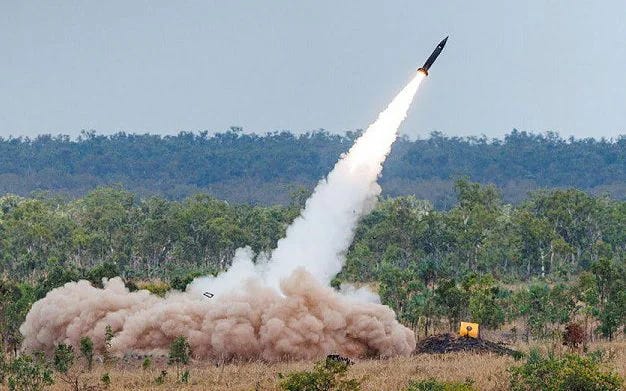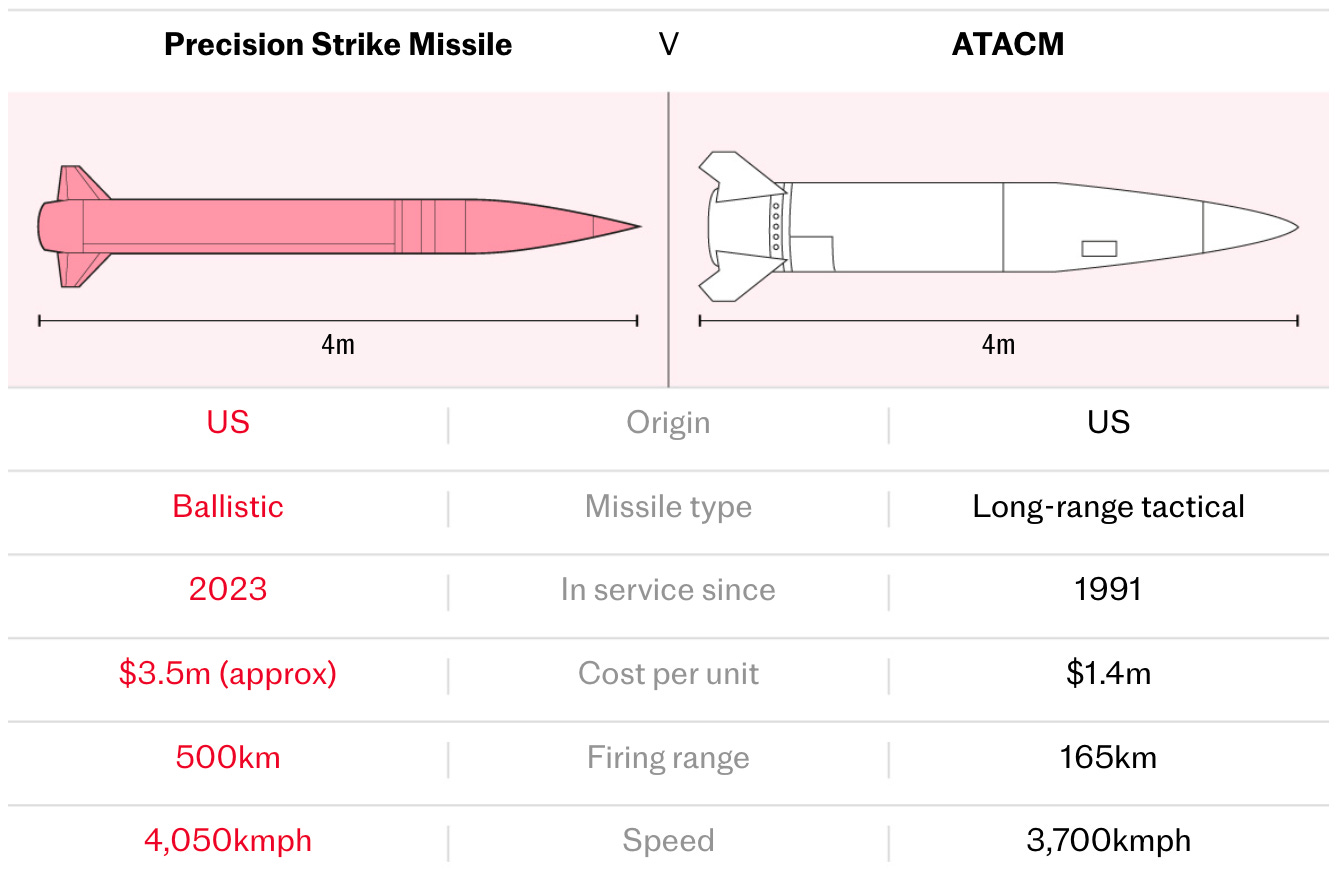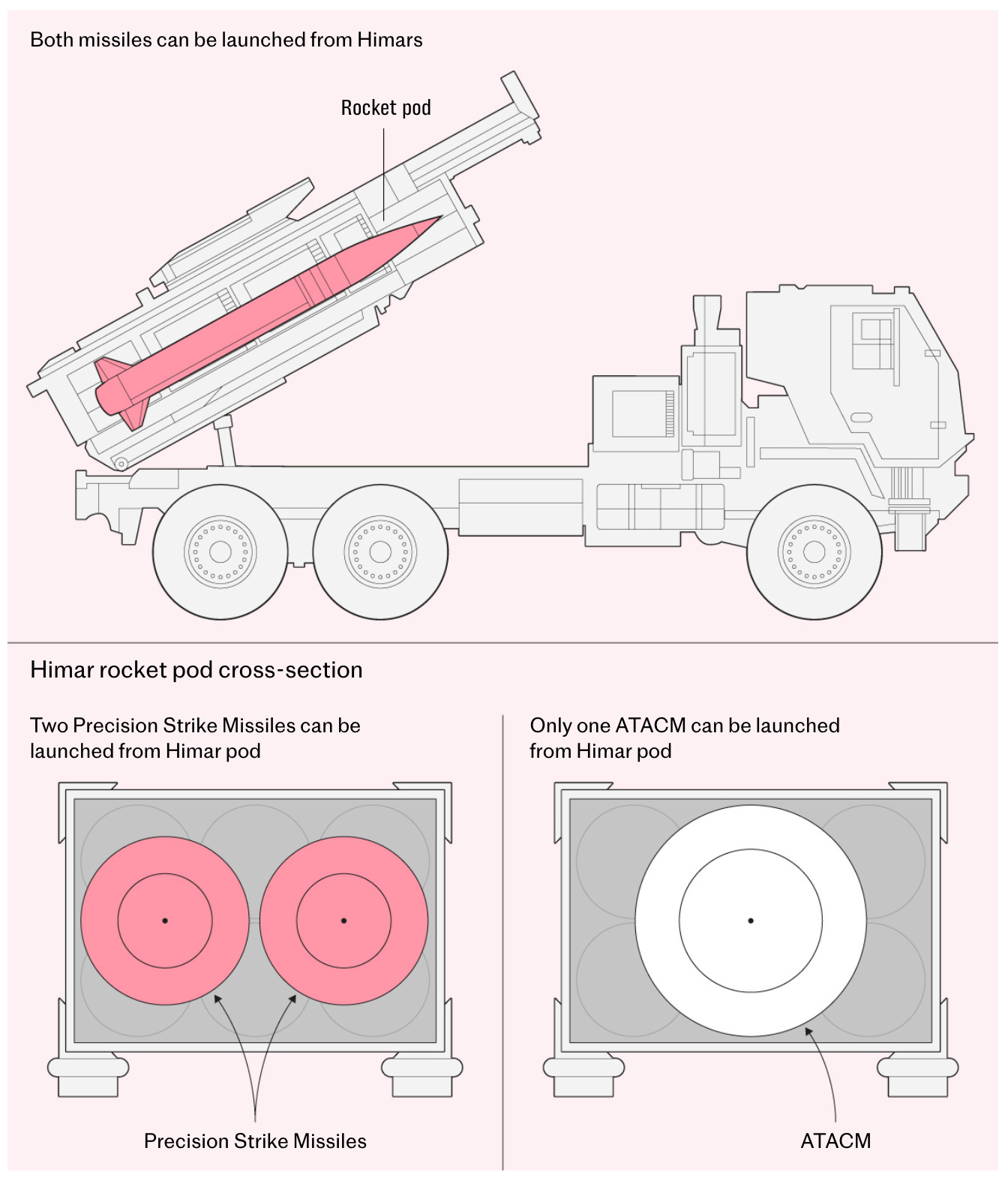Trump's New Missile Could Halt a Chinese Invasion of Taiwan
With a range of more than 300 miles, the new Precision Strike Missiles (PrSMs, or "prisms") is a game-changer that could sink the Chinese Navy. Here's why.
Don’t miss our Deep Dive “The Illusion of Chinese Strength: Power, Paranoia, and the Temptation of War”. It’s one of the most important things we’ve ever published.

by Benedict Smith
August 12, 2025
A frantic arms race between the U.S. and China is underway in the Pacific while the fate of Taiwan hangs in the balance.
Washington and its allies are trying to stay ahead of Chinese capabilities, shaking Beijing off-balance as it considers whether it can launch a successful invasion of Taiwan.
At the heart of the U.S. strategy is a new technology that has the ability to inflict devastating losses on the Chinese navy: Precision Strike Missiles (PrSMs, pronounced “prisms”).
The missiles have just been tested in Australia, where they struck targets more than 190 miles away, marking the first time the Lockheed Martin-manufactured weapon has been used by a U.S. ally.
It can be fired by either the HIMARS or MLRS artillery systems: missile launchers that were recently used by Ukraine to launch counter-offensives on invading Russian forces and strike deep inside enemy territory, blunting Moscow’s advances.
Game-Changing Firepower
To date, those launchers have been used with ATACMS missiles, which have been in service for more than three decades with a top range of some 190 miles.
But PrSMs reportedly have a range of more than 300 miles, with the potential for this to improve in future variants. And at the recent test flight in Australia, the missile reached speeds of 4,000kmph, beating the ATACMS by some 300kmph.
Each launch pod will be able to hold two of the precision missiles, compared to just a single ATACM, according to Alex Miller, the US Army’s chief technology officer. It is also said to be less susceptible to jamming.
The PrSMs combine those next-generation improvements with the advantages of the HIMARS and MLRS systems, which are quick, agile, and relatively easy to disguise — and could wreak havoc on Chinese ships attempting an invasion.
Brad Bowman, a senior director at the Foundation for Defence of Democracies, said: “It really creates a challenge for our adversaries, because where that system is now, it may not be there in 30 seconds or five minutes… That’s a real detection and targeting dilemma.”
Both the U.S. and China are ramping up their military capabilities in the Pacific and particularly around Taiwan, which Beijing regards as part of its territory even though it has effectively been independent since the 1940s.
Taiwan Under Threat
Earlier this year, Xi Jinping, the Chinese premier, said “reunification” with China was inevitable, and that those on either side of the Taiwan Strait were “one family”.
PrSMs could stop that cold. But time could be short.





